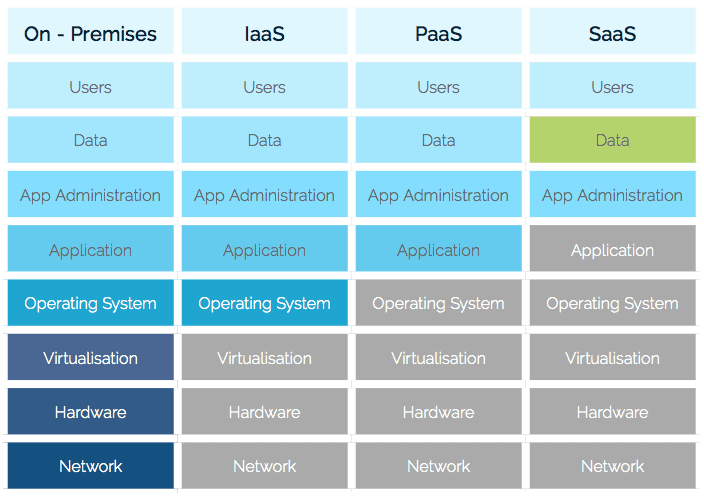2019 SaaS Trends: If the Climate’s Sunny, Why’s the Forecast Mixed?
The adoption of SaaS applications is projected to grow at double-digit rates through 2019, according to Bain & Co.; projections for SaaS growth per Gartner are similar. In 2019, organizations wanting the benefits of SaaS applications will find themselves in good company. The climate for adopting SaaS is sunny, trending up and to the right.
But a trend in the climate isn’t the same as a trend in the weather — and MSPs and IT managers at mid-market organizations need to be aware of this distinction as they plan for (more) SaaS adoption in 2019.

[More organizations moving from on-premises applications to SaaS to increase efficiency and agility.]
SaaS adoption and SaaS backup in 2019: Climate vs weather
The widely discussed advantages of SaaS have contributed to the climate of accelerated adoption, now and projected through 2019. These include:
- Increasing IT efficiency. When using SaaS applications, customers have a strikingly reduced need to fix and maintain on-premises storage, software updates and patches, and custom coded solutions.
- Making IT costs predictable. SaaS licensing models and planned renewal costs add predictability to IT spending, in contrast to the unexpected break-fix costs for on-premises storage hardware and applications.
- Increasing business agility. SaaS subscription models and OpEx accounting help reduce the vendor lock-in issues seen with on-premises applications and infrastructure, increasing business agility. SaaS applications also facilitate remote and distributed workforces by enabling anytime-anywhere collaboration and computing.
But there’s some cloudy weather ongoing for those who adopt SaaS in 2019, despite the sunny climate:
- SaaS applications are increasingly targeted by cybercriminals. Although most SaaS application providers have robust security protocols in place–and are likely better hardened than on-premises systems–the value of the data stored by SaaS applications makes them a target of interest.
- SaaS customers share responsibility for their data with their vendors. Google, Microsoft, and Salesforce communicate this clearly in their documentation. As noted in the model below, while the vendor owns responsibility for the application and code, the operating system their code runs on, the storage and infrastructure behind the app…they don’t own managing users, or administration of the app. And both vendor and customer share responsibility for data.
- SaaS vendors cannot protect you from you. If you or a user accidentally deletes a file or record, or malicious actors destroy your data, it may be lost forever. Your SaaS vendor is obligated to carry out your requests. They won’t know whether the request was accidental or malicious, so it’s up to you to minimize the risk of data loss.
Your all-weather protection for SaaS application data loss
Given that SaaS vendors share responsibility for data with their customers, organizations need protection for SaaS data loss caused by factors on their end, including:
- Sync errors
- Accidental deletions
- Overwrites in error
- Malicious actions
- Incorrect configurations
Spanning Backup for G Suite, Office 365 and Salesforce all were purpose-built to meet the need for quick, accurate restores in these situations. Though the climate remains sunny for SaaS, you can protect yourself from changing SaaS weather by adopting Spanning Backup.
Learn more about Spanning Backup
*** This is a Security Bloggers Network syndicated blog from Spanning authored by Lori Witzel. Read the original post at: https://spanning.com/blog/2019-saas-trends-if-the-climates-sunny-whys-the-forecast-mixed/





